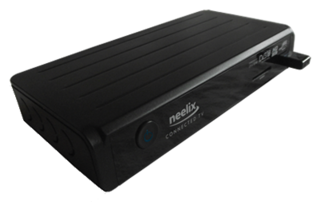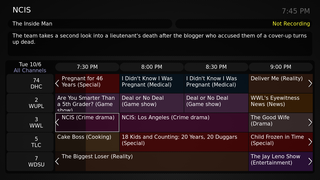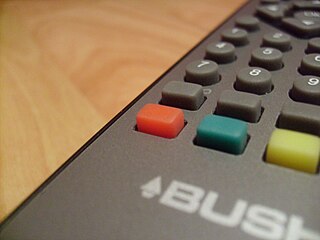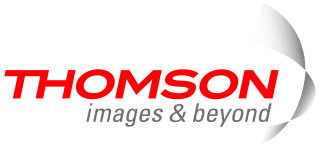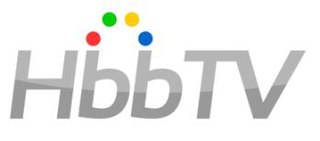A TV Key is a mechanism for any advertiser or content owner to link consumers to specific interactive television destinations, including enhanced TV applications, from media delivered over broadcast or broadband networks [1] [2] TV Keys can be embedded in any video stream [3] and can be used as an on-screen call to action. TV Keys can also be displayed in newspaper advertisements and other printed collateral. [4] A TV Key associates a brand or memorable word with a numeric code. Viewers enter the TV Key word by matching the letters to numbers on their television remote control.

Advertising is a marketing communication that employs an openly sponsored, non-personal message to promote or sell a product, service or idea. Sponsors of advertising are typically businesses wishing to promote their products or services. Advertising is differentiated from public relations in that an advertiser pays for and has control over the message. It differs from personal selling in that the message is non-personal, i.e., not directed to a particular individual. Advertising is communicated through various mass media, including traditional media such as newspapers, magazines, television, radio, outdoor advertising or direct mail; and new media such as search results, blogs, social media, websites or text messages. The actual presentation of the message in a medium is referred to as an advertisement, or "ad" or advert for short.

Broadcasting is the distribution of audio or video content to a dispersed audience via any electronic mass communications medium, but typically one using the electromagnetic spectrum, in a one-to-many model. Broadcasting began with AM radio, which came into popular use around 1920 with the spread of vacuum tube radio transmitters and receivers. Before this, all forms of electronic communication were one-to-one, with the message intended for a single recipient. The term broadcasting evolved from its use as the agricultural method of sowing seeds in a field by casting them broadly about. It was later adopted for describing the widespread distribution of information by printed materials or by telegraph. Examples applying it to "one-to-many" radio transmissions of an individual station to multiple listeners appeared as early as 1898.
In telecommunications, broadband is wide bandwidth data transmission which transports multiple signals and traffic types. The medium can be coaxial cable, optical fiber, radio or twisted pair.
A TV Key is a feature of the open, standards-based interactive TV services platform provided by Miniweb Interactive and can be used with interactive TV services over multiple television network types [5] including satellite TV [6] and digital terrestrial television. [7] By entering a TV Key through their remote control, the television viewer can access additional video services or interactive content authored in wTVML and presented as a TV Site. [8] For this reason, TV Keys have been described as “numeric shortcuts to online services that can be accessed through a television remote control”. [9]
Satellite television is a service that delivers television programming to viewers by relaying it from a communications satellite orbiting the Earth directly to the viewer's location. The signals are received via an outdoor parabolic antenna commonly referred to as a satellite dish and a low-noise block downconverter.
Digital terrestrial television is a technology for broadcast television in which land-based (terrestrial) television stations broadcast television content by radio waves to televisions in consumers' residences in a digital format. DTTV is a major technological advance over the previous analog television, and has largely replaced analog which had been in common use since the middle of the last century. Test broadcasts began in 1998 with the changeover to DTTV beginning in 2006 and is now complete in many countries. The advantages of digital terrestrial television are similar to those obtained by digitising platforms such as cable TV, satellite, and telecommunications: more efficient use of limited radio spectrum bandwidth, provision of more television channels than analog, better quality images, and potentially lower operating costs for broadcasters.
WTVML is an XML-based and WML-derived content format designed to allow web site operators to easily develop and deploy Interactive TV services, typically it reduces the time taken for web site operators to create a TV Site, and results in the Site being deployable on a larger number of devices, and is capable of being automatically validated, tested and transformed.
A TV Key is viewed as one element of a converged broadcast and broadband experience that provides personalized web-style interactivity for television viewers on the TV. [10] It has been designed to encourage usage of an interactive television services and video. [11]
TV Keys have been available since April 2008 on the UK satellite TV provider Sky Digital (BSkyB). The TV Key service is available to all Sky subscribers through the interactive menu and all channels. [12] TV Keys allow broadcasters, television network operators, content owners and advertisers to deliver new services that monetize the way viewers interact with the television. [13]
The subscription business model is a business model in which a customer must pay a recurring price at regular intervals for access to a product or service. The model was pioneered by publishers of books and periodicals in the 17th century, and is now used by many businesses and websites.
